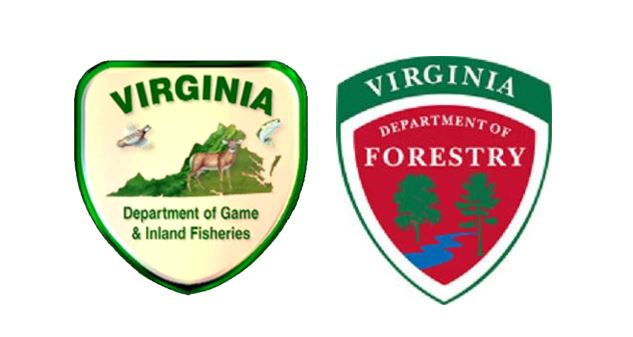 Oaks are among the most common hardwood tree species in many parts of Virginia. Because of their importance both as a source of forest regeneration and as a mast crop for wildlife, each year’s acorn crop is the subject of much attention. It seems almost every year there are concerns as to why there is either an over-abundance or scarcity of acorns. This year is no different. Many reports from various parts of the Commonwealth indicate that the acorn crop this fall is very light, according to officials at the Virginia Department of Forestry (VDOF) and the Virginia Department of Game and Inland Fisheries (DGIF).
Oaks are among the most common hardwood tree species in many parts of Virginia. Because of their importance both as a source of forest regeneration and as a mast crop for wildlife, each year’s acorn crop is the subject of much attention. It seems almost every year there are concerns as to why there is either an over-abundance or scarcity of acorns. This year is no different. Many reports from various parts of the Commonwealth indicate that the acorn crop this fall is very light, according to officials at the Virginia Department of Forestry (VDOF) and the Virginia Department of Game and Inland Fisheries (DGIF).
VDOF Research Program Manager Jerre Creighton said, “Acorn production varies widely – from nearly zero to a quarter million or more acorns per acre. Different locations, years, species and even individual trees produce extremely different crops, and heavy ‘bumper’ crops occur only every two to seven years.”
While it is impossible to pinpoint one specific cause that would explain the acorn crop for an entire region in a given year, there are many factors – such as weather, insects and disease – that collectively influence acorn development from the time of flower initiation to acorn maturity.
Most flowers seem to be aborted between the time of initiation and pollination. Late spring freezes and high humidity during pollination are primary causes (we experienced both of these over much of Virginia in 2013). Later, immature acorns can be lost due to summer droughts, high temperatures or insect predation. In addition, research has shown that the inherent cycles between bumper crops and light crops may be an adaptation to allow the trees to restore their resources following a bumper crop.
Creighton said, “In other words, a large crop one year may reduce the trees’ resources resulting in lower production the following year(s). Since 2012 was a bumper crop of acorns for much of Virginia, this could be another explanation for this year’s light crop. The overall consensus seems to be that there are inherent cycles of reproduction that are modified by the impact of weather conditions in a particular location.”
Several observers have questioned whether the periodical cicadas that emerged in much of the Commonwealth this year could be a factor. According to VDOF Forest Health Program Manager Dr. Chris Asaro, that is unlikely.
“I don’t think they have anything to do with it,” Asaro said, “because the mast failure seems to be a lot more widespread across the state, including areas that saw no cicadas. Plus, cicada activity was pretty spotty even in the outbreak areas, yet mast failures still seem to be occurring just about everywhere. While I think it’s physiologically plausible that some heavily attacked trees saw lower mast yields than they otherwise might have, I don’t think it’s a complete explanation for what’s going on.”
Gary Norman of DGIF said, “Acorn production in Virginia in 2013 was low – comparable to the previous low in 2008. The white oak crop appeared to uniformly fail across the state, while some pockets (generally in eastern Virginia) of good red oak production were found. Mast production has alternated from high to low levels since 2010. The impacts of acorns on wildlife populations are extensive and complex. And they are most dramatic where there is little diversity of habitat types and few alternative food sources to acorns.”
DGIF officials are concerned about a light crop because acorns are a preferred food for many wildlife species, including white-tailed deer, black bear and wild turkey. Acorns are rich in fat, soluble carbohydrates and energy, which are important nutritional needs that contribute to the animal’s body condition, survival, harvest rates, reproduction and, eventually, population status. The roaming range of black bear and wild turkey can increase two- to four-fold in years with mast failures, and long-range gray squirrel movement can be significant as they search for acorns.
Norman said, “Oftentimes the search for food creates situations that bring wildlife closer into residential areas to find human-related food sources resulting in unwanted interactions between animals and people.”
In addition, deer may over-browse their habitats when acorns are not available, thus reducing their habitat’s carrying capacity for future deer populations. Black bear tend to den earlier when fat-rich acorns are scarce, and this tends to limit the build-up of their nutritional reserves (fat). And bear cub survival tends to decline in years with mast failures.


